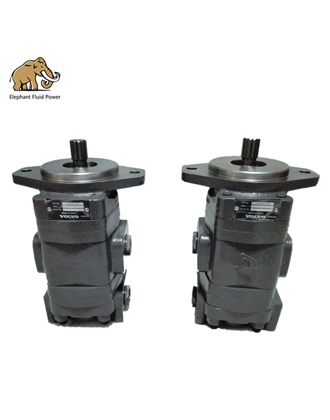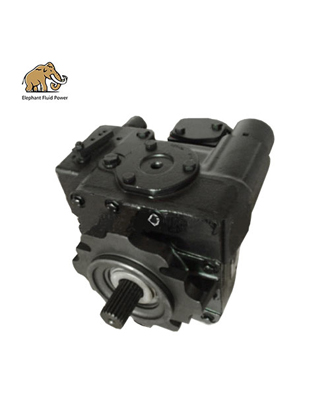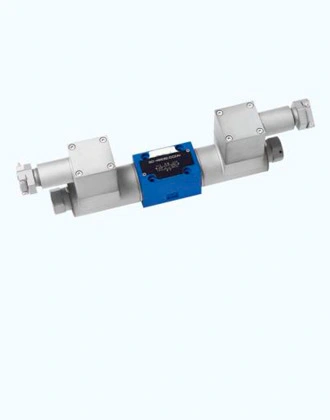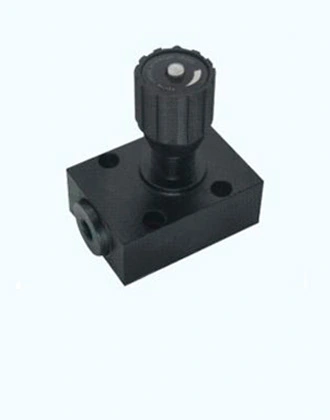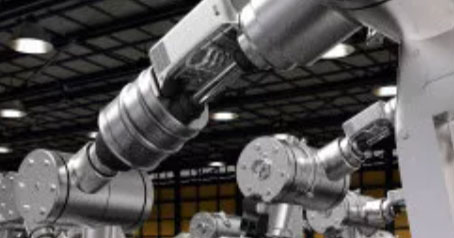Understanding hydram pump
Commonly used hydram pumps in hydraulic systems include gear pumps, vane pumps, and piston pumps. Although the structures of different types of hydram pumps are very different, there are many commonalities in installation, use, and maintenance. If not operated properly, it may cause faults.
The function of a hydram pump is to convert mechanical energy of a power unit (such as an electric motor or an internal combustion engine) into hydraulic pressure. A variable pump whose output flow can be adjusted according to needs is called a variable pump, and a pump whose flow cannot be adjusted is called a fixed-displacement pump. Although the structures of hydram pumps are highly variable, there are many commonalities in installation and use. So what should be noted when connecting the hydram pump?
Precautions for connecting hydram pumps
Hydram pumps can be installed with brackets or flanges. The pump and the power unit should use the same basic bracket, and both the flange and the foundation should have sufficient rigidity. Pay special attention that the piston pump with a flow rate greater than or equal to 160 L/min should not be installed on the fuel tank.
An elastic coupling should be used to connect the hydram pump and the output shaft of the power unit. It is strictly forbidden to install a pulley or gear on the hydram pump shaft, if it is necessary to use a pulley or gear to connect with the pump, a pair of brackets should be added to install the pulley or gear, and the coaxiality error between the support and the pump shaft should not be greater than φ0.05mm.
The suction hose should be as short, straight, large, and thick as possible. The suction pipeline generally needs to be equipped with a coarse filter with a nominal flow rate not less than twice the pump flow rate (the filter accuracy is generally between 80 and 180μm). The pump's oil return pipe should be directly connected to the fuel tank, and the back pressure of the oil return should not exceed 0.05MPa. The suction port and the oil return port of the oil pump should both be at least 200mm below the lowest oil level of the fuel tank. It is especially noteworthy that a filter cannot be installed on the suction pipeline of the piston pump, and the valve diameter of the cutoff valve on the suction pipeline should be one gauge larger than that of the suction pipeline.
The inlet and outlet ports of the hydram pump should be installed firmly, and the sealing device should be reliable, otherwise, it will cause air suction or oil leakage, affecting the performance of the hydram pump.
The self-suction height of the hydram pump does not exceed 500mm (or the inlet vacuum does not exceed 0.03MPa). If a replenishing pump is used for oil supply, the oil supply pressure should not exceed 0.5MPa. When the oil supply pressure exceeds 0.5MPa, pressure-resistant sealing rings should be used. For piston pumps, inverted self-suction should be used as much as possible.
Before installing the hydram pump, check whether the depth of the installation hole is larger than the shaft extension length of the pump to prevent the top shaft phenomenon, otherwise, the pump will burn out.
 French
French
 Portuguese
Portuguese
 Russian
Russian
 German
German
 Spanish
Spanish
 Japanese
Japanese
 Korean
Korean
 Irish
Irish
 Greek
Greek
 Turkish
Turkish
 Italian
Italian
 Danish
Danish
 Romanian
Romanian
 Indonesian
Indonesian
 Czech
Czech
 Afrikaans
Afrikaans
 Swedish
Swedish
 Polish
Polish
 Basque
Basque
 Catalan
Catalan
 Esperanto
Esperanto
 Hindi
Hindi
 Lao
Lao
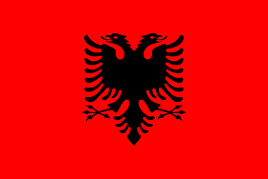 Albanian
Albanian
 Amharic
Amharic
 Armenian
Armenian
 Azerbaijani
Azerbaijani
 Belarusian
Belarusian
 Bengali
Bengali
 Bosnian
Bosnian
 Bulgarian
Bulgarian
 Cebuano
Cebuano
 Chichewa
Chichewa
 Corsican
Corsican
 Croatian
Croatian
 Dutch
Dutch
 Estonian
Estonian
 Filipino
Filipino
 Finnish
Finnish
 Frisian
Frisian
 Galician
Galician
 Georgian
Georgian
 Gujarati
Gujarati
 Haitian
Haitian
 Hausa
Hausa
 Hawaiian
Hawaiian
 Hebrew
Hebrew
 Hmong
Hmong
 Hungarian
Hungarian
 Icelandic
Icelandic
 Igbo
Igbo
 Javanese
Javanese
 Kannada
Kannada
 Kazakh
Kazakh
 Khmer
Khmer
 Kurdish
Kurdish
 Kyrgyz
Kyrgyz
 Latin
Latin
 Latvian
Latvian
 Lithuanian
Lithuanian
 Luxembourg
Luxembourg
 Macedoniar
Macedoniar
 Malagasy
Malagasy
 Malay
Malay
 Malayalam
Malayalam
 Maltese
Maltese
 Maori
Maori
 Marathi
Marathi
 Mongolian
Mongolian
 Burmese
Burmese
 Nepali
Nepali
 Norwegian
Norwegian
 Pashto
Pashto
 Persian
Persian
 Punjabi
Punjabi
 Serbian
Serbian
 Sesotho
Sesotho
 Sinhala
Sinhala
 Slovak
Slovak
 Slovenian
Slovenian
 Somali
Somali
 Samoan
Samoan
 Scots Gaelic
Scots Gaelic
 Shona
Shona
 Sindhi
Sindhi
 Sundanese
Sundanese
 Swahili
Swahili
 Tajik
Tajik
 Tamil
Tamil
 Telugu
Telugu
 Thai
Thai
 Ukrainian
Ukrainian
 Urdu
Urdu
 Uzbek
Uzbek
 Vietnamese
Vietnamese
 Welsh
Welsh
 Xhosa
Xhosa
 Yiddish
Yiddish
 Yoruba
Yoruba
 Zulu
Zulu

